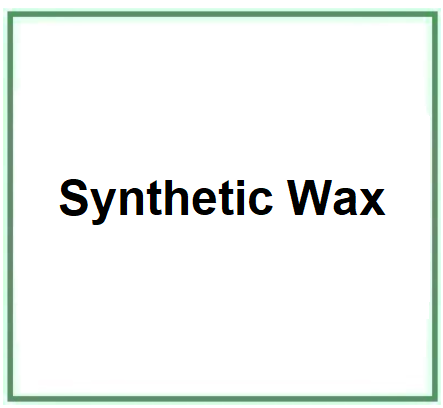Synthetic wax is an artificially created product that emulates the properties of natural waxes. This type of wax is often used in a variety of products, including cosmetics, skincare products, cleaning products, and in some industrial applications. Synthetic wax can be formulated to have specific desired properties, such as a particular consistency or melting point, making it suitable for specific applications. For instance, it can be used to enhance the texture of cosmetics or to increase the longevity of skincare products.
Materials Used in Production.
Synthetic waxes are produced using various starting materials, including olefinic monomers, fatty alcohols, and/or petroleum derivatives. The choice of raw material varies depending on the desired type of synthetic wax and the production process adopted.
Step-by-step Summary of Industrial Chemical Synthesis Process.
- Polymerization. Monomers are polymerized using appropriate catalysts to form long-chain polymers.
- Physical Manipulation. The polymer might undergo further physical alterations, such as chain stretching or crystallization, to modify its physical properties.
- Refining Processes. Synthetic wax might need additional refining processes, like filtration, to remove impurities.
- Chemical Modifications (if needed). Additional chemical modifications may be conducted to impart specific characteristics to the wax, such as changes in hardness, melting point, or coloration.
Form and Color.
Synthetic wax may come in various forms, such as pellets, pearls, or flakes, and colors can range from colorless to colored, depending on the dyes or modifications used in the production process.
Commercial Applications.
Synthetic waxes are used in a variety of applications, including the production of cosmetics, shoe polish, furniture wax, protective coatings, and in some foods as additives or coating agents.
Cosmetics
- Abrasive agent. It contains abrasive particles to remove stains or biofilm that accumulate on the stratum corneum or teeth. Baking soda, kieselguhr, silica and many others have abrasive properties. Peeling or exfoliating products used in dermatology or cosmetic applications contain abrasive agents in the form of synthetic microspheres, however these microspheres or abrasive particles are not biodegradable and create pollution in aquatic ecosystems.
- Binder agent. Ingredient that is used in cosmetic, food and pharmaceutical products as an anti-caking agent with the function of making the product in which it is incorporated silky, compact and homogenous. The binder, either natural such as mucilage, gums and starches or chemical, may be in the form of a powder or liquid.
- Emulsion stabiliser. Emulsions are thermodynamically unstable. Emulsion stabilisers improve the formation and stability of single and double emulsions. as well as their shelf-life. It should be noted that in the structure-function relationship, the molar mass of the ingredient used plays an important role.
- Fragrance. It plays a very important role in the formulation of cosmetic products as it provides the possibility of enhancing, masking or adding fragrance to the final product, increasing its marketability. It is able to create a perceptible pleasant odour, masking a bad smell. The consumer always expects to find a pleasant or distinctive scent in a cosmetic product.
- Viscosity control agent. It controls and adapts, Increasing or decreasing, viscosity to the required level for optimal chemical and physical stability of the product and dosage in gels, suspensions, emulsions, solutions.
CAS 8002-74-2
EC number 232-315-6
Hair Care Products. It's often used in hair products like hair gels and pomades to provide hold and structure.
Candle Industry. Synthetic wax is used in the production of candles, providing an alternative to beeswax or paraffin.
Automotive and Maintenance. Used in the production of car waxes and polishing products to provide a glossy, durable protection to surfaces.
Arts and Crafts Industry. Applied in various forms of art and craft processes such as modeling, sculpting, and mold-making.
![]() Synthetic Wax
Synthetic Wax 

